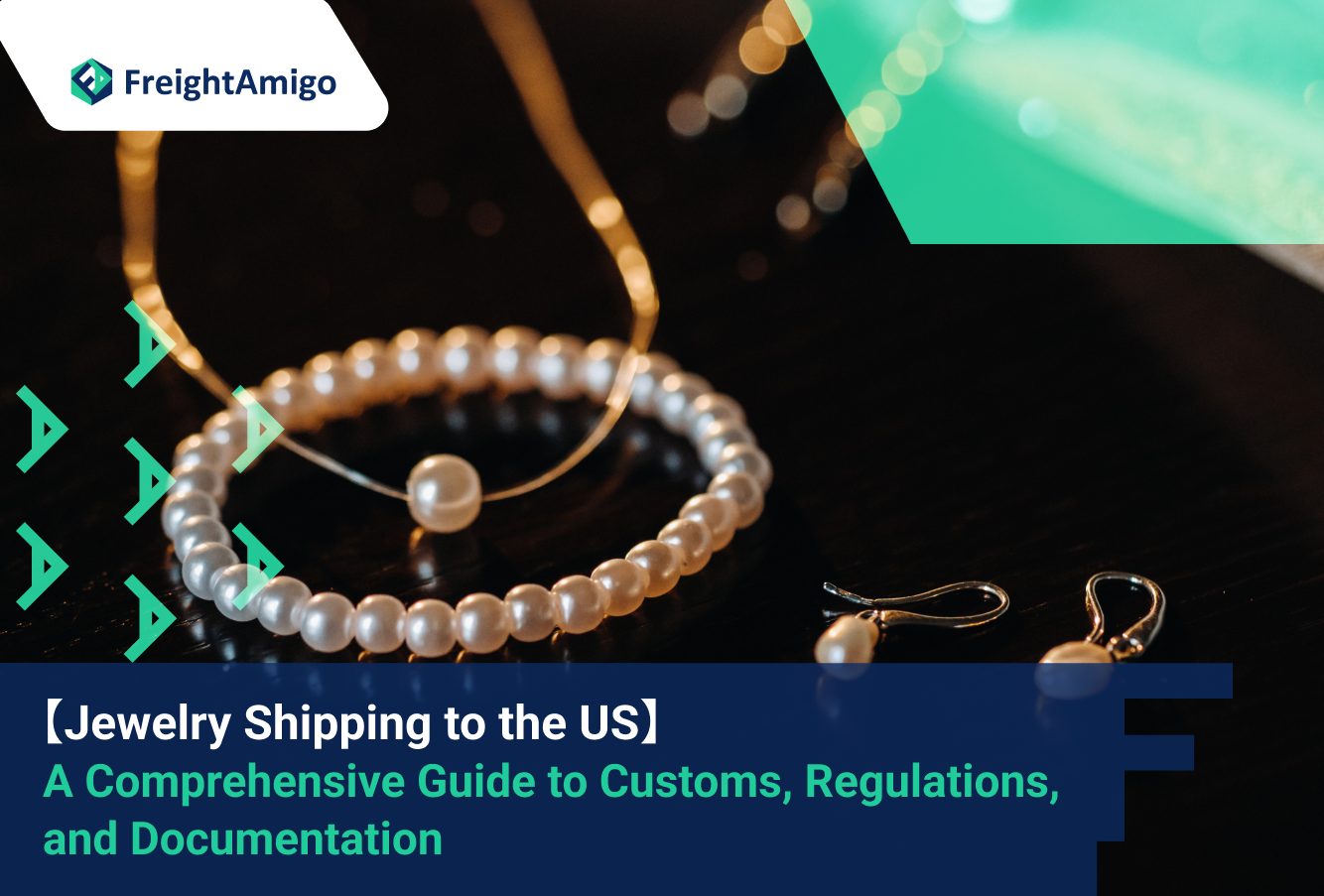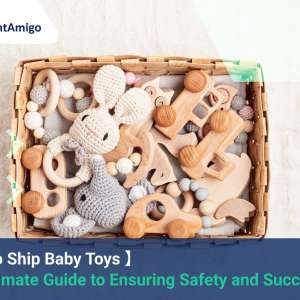In today’s global marketplace, the demand for jewelry continues to soar, making it a lucrative business opportunity for international importers. If you’re considering importing jewelry to the United States, it’s crucial to navigate the intricate customs regulations and documentation requirements. This comprehensive guide will provide you with all the essential information you need to successfully ship jewelry to the US.
Latest update on 19 February, 2024 by Aurora Park– Marketing Analyst at FreightAmigo
Want to compare the best Express, Air Freight, Sea Freight, Rail Freight & Trucking rates so as to have better control on cost?
Duty Rates for Importing Jewelry to the US
Before importing jewelry to the United States, understanding the duty rates associated with different jewelry items is crucial. The Harmonized Tariff Schedule website provides comprehensive information on customs duty rates for goods imported into the US. By entering the product’s name or its corresponding HTS code, you can easily access the applicable import tariff rates. It’s important to note that duty rates can vary depending on the type of jewelry item. Here are some examples of duty rates for selected jewelry categories:
- Articles of natural or cultured pearls, natural (7116.10.10) – 3.3%
- Articles of natural or cultured pearls, cultured (7116.10.25) – 5.5%
- Articles of precious or semiprecious stones, valued not over $40 per piece (7116.20.05) – 3.3%
- Articles of jewelry of silver, whether or not plated or clad with other precious metal (7113.11.10) – 6.3%
- Articles of jewelry of other precious metal, whether or not plated or clad with precious metal (7113.19.10) – 7%
- Necklaces and neck chains of gold, rope (7113.19.21) – 5%
- Necklaces and neck chains of gold, mixed link (7113.19.25) – 5.8%
- Cuff links and studs (7117.11.00) – 8%
- Imitation jewelry of base metal, whether or not plated with precious metal – 8%
It’s essential to accurately classify your jewelry items to determine the correct HTS codes and corresponding duty rates. Additionally, it’s important to note that tax payment in the United States is only required for orders valued at $800 or more. Shipments below this threshold are considered tax-free, with the exception of certain items such as alcoholic beverages, alcohol-containing perfumes, cigars, or cigarettes.
Requirements for Importing Jewelry to the United States
While the United States does not have standardized laws that explicitly state the requirements for imported goods, certain products, including jewelry, must comply with applicable obligations. The Customs Border Protection (CBP) has the authority to examine any shipment entering the US to ensure the safety and compliance of the goods. Familiarizing yourself with CBP policies and ensuring your jewelry products meet relevant requirements is essential.
Federal Trade Commission (FTC) Compliance
When it comes to jewelry, compliance with the Federal Trade Commission (FTC) regulations is crucial. The FTC has established guidelines for labeling and advertising jewelry items to prevent misinterpretation of materials or manufacturing processes. These guidelines define terms such as “precious,” “semi-precious,” “imitation,” “cultured pearls,” and “imitation pearls,” among others. Adhering to the FTC guidelines is essential for proper classification and to avoid delays, monetary penalties, and other inconveniences.
The PATRIOT Act and Anti-Money Laundering Regulations
Most jewelry businesses in the US are subject to Anti-Money Laundering laws and regulations, commonly referred to as the PATRIOT Act or AML. If you import jewelry for which 50% of the value derives from precious stones or metals or engage in buying and selling $50,000 or more in precious metals or stones annually, these rules apply to you. In such cases, you are required to establish an anti-money laundering program and comply with its requirements.
Safety Requirements for Jewelry Intended for Children
In the United States, jewelry designed or intended primarily for children aged 12 and younger must meet additional safety requirements. The Consumer Product Safety Improvement Act (CPSIA) enforced by the Consumer Product Safety Commission (CPSC) regulates chemical substances in children’s jewelry. Importers must ensure that their children’s jewelry complies with mandatory ASTM (American Society for Testing and Materials) substance standards.
Before importing and selling jewelry for children, it’s essential to have the items tested by a CPSC-approved testing company to verify compliance with safety requirements. Importers must issue a Children’s Product Certificate (CPC), which is mandatory for importing and selling children’s jewelry in the United States. The jewelry items must also be marked with a CPSIA Tracking Label, displaying information such as the company name, production place and date, and batch number.
It’s important to note that regulations regarding jewelry for children may vary from state to state. Therefore, it’s crucial to familiarize yourself with specific regulations in different states that may have their own requirements.
Basic Regulations and Documentation
Regardless of the product being imported, there are some basic regulations that apply to all goods entering the United States. Ensuring the mandatory documentation is complete is of utmost importance. The necessary documents include a commercial invoice from the exporter, a packing list, a Bill of Lading (B/L) for sea freight or an Air Waybill (AWB) for air freight, and an Entry Manifest (CBP Form 7533). Additionally, all imported goods to the US must have a Country of Origin (COO) label affixed to them. Before shipment, verify if your products or packaging have the required COO label.
Summary: Successfully Importing Jewelry to the US
Importing jewelry to the United States can be a profitable venture, but it requires careful navigation of customs regulations and compliance with documentation requirements. Proper classification of jewelry items, understanding duty rates, and ensuring compliance with specific regulations are essential for a successful import process. Additionally, it’s crucial to establish reliable business partnerships and verify suppliers to avoid potential fraud. By following the guidelines outlined in this comprehensive guide, you’ll be well-equipped to navigate the complexities of jewelry shipping to the US and seize the opportunities offered by this thriving industry.
There are different options for cargo transportation. If you want to choose the most convenient and suitable solution, it is best to have the full support of logistics experts! If you are planning to import jewelry to the United States, please go to the FreightAmigo page for inquiries.
Read More:
The Importance of Jewelry Shipping Insurance | FreightAmigo
How to ship a ring | Jewelry Shipping | FreightAmigo
How to Safely Ship a Necklace | Jewelry Shipping | FreightAmigo
If you have any inquiries on logistics/supply chain, feel free to contact FreightAmigo now:
Chat with us online | Hotline: +852 28121686 | WhatsApp: +852 27467829









































